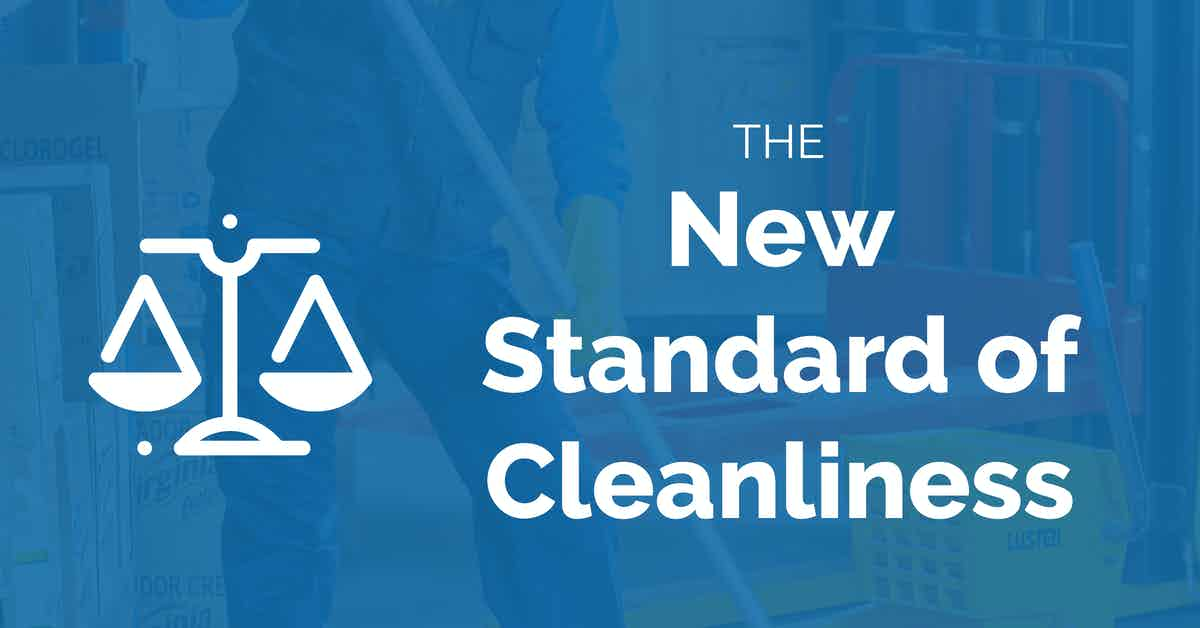The COVID-19 pandemic has pigeonholed our previous concept of facility cleanliness and hygiene, specifically where occupant health and safety were concerned, and a new standard must emerge to protect the common welfare.

What it Means to be Clean in a Post-COVID World
A significant contributing factor to the spread of SARS-CoV-2 was, and remains, the absence of effective cleaning and disinfection measures throughout schools and businesses across the U.S., combined with disturbingly low compliance levels regarding hand-hygiene and a near-complete void in the understanding, monitoring, and maintenance of indoor air quality.
Currently, as the pandemic begins to abate and students, workers, and consumers are allowed to return to a semblance of their life before the outbreak, new regulations and expectations have taken root that requires schools and businesses who wish to open and remain in business to adopt enhanced cleaning for health measures well in excess of the pre-COVID concept of cleaning for appearance.
According to Paul Edmondson, P&G Professional Americas Commercial Director;
Now more than ever, it is critical that businesses achieve and maintain a high level of cleanliness and disinfection to help ensure the health and safety of employees and guests.
Communicating the steps taken to achieve these new standards of clean is key to building trust with customers while rebuilding their business.
Achieving and Maintaining a High Level of Cleanliness
Achieving a high level of cleanliness requires a three-pronged approach to facility health:
- Surface sanitation.
- Indoor air quality, and;
- Occupant hygiene.
The first thing that must be understood is that there is no one-size-fits-all fix for cleaning and disinfecting the surfaces in any given facility--each building, school, and business will have their own unique requirements.
However, in general, the following protocols have proven effective at increasing facility cleanliness and occupant wellness and safety while combating yearly viral outbreaks, as well as other germs and bacteria:
- Map out your facility, establish zones based on occupancy and use, and assign a priority to each zone based on occupant risk.
- Identify zones with high levels of foot traffic, especially in and out of the building, then identify high-contact touchpoints within those zones.
- Assign a porter to wipe down those touchpoints several times throughout the day.
- Check with your local and state regulations, as there may be mandates in place requiring a frequency of cleaning based on facility size, type, and occupancy numbers.
- Clean the floors, bathrooms, dining areas, food prep facilities, and break rooms every day with commercial-grade microfiber.
- Scrub the floor and all hard surfaces every week with a no-touch vacuum scrubber appliance.
- Disinfect the entire facility at least once per week, preferably with a no-touch electrostatic disinfection appliance, and;
- Always remember to clean before disinfecting.
Indoor air quality has several factors that tie into high-performance cleaning with a focus on occupant health, including:
- Where possible, use environmentally-friendly cleaning and disinfection methods.
- Use commercial-grade HEPA filtered HVAC systems and air cleaning systems.
- Monitor indoor air quality with CO2 sensors.
- Where possible, allow outdoor air to circulate indoors when it is cool.
- Increase airflow through the HVAC and other systems to disperse and dilute harmful airborne pathogens and other particles.
- Avoid the use of masking agents, air fresheners, and other dangerous chemicals, and;
- Train your staff to recognize the signs of air quality issues and symptoms in facility occupants, such as headaches, itchy eyes, breathing problems, and nausea.
Finally, occupant hygiene, specifically handwashing compliance, is mandatory for preventing the spread of germs, ensuring the efficacy of cleaning programs, and protecting occupant health.
By now, everyone knows the drill:
- Scrub your hands with soap and water for twenty to thirty seconds, and;
- Dry with a clean paper towel.
- Avoid the over-application of hand sanitizers, especially now where questionable products are circulating the market and to avoid destroying beneficial bacteria present on your skin, and;
- Pay attention to what you touch when you're outside your home and avoid touching your face, nose, eyes, and mouth in public.
Once these routines are established in your organization, the protocols should be clearly communicated to all occupants in whatever form best meets their need for information and security.
References & Resources
- Retail Reopening: What Does it Mean to be a Clean Facility Now?
- 'No One Mentions the People Who Clean It Up': What It's Like to Clean Professionally During the COVID-19 Outbreak
- Restaurant Reopening: Understanding and Complying with the “New Normal”
Takeaway
The world as we knew it might never entirely return.
Perhaps, that is not necessarily a bad thing.
Dangerous and unhealthy practices contributed to the spread of the pandemic and should become a thing of the past for everyone's sake.
Making the shift from cleaning for appearance to meeting the government mandates for ongoing cleaning for health practices can be difficult without professional training and guidance.
Outsourcing your facilities' enhanced cleaning and disinfection requirements to an experienced service provider is a proven method for ensuring the highest standards of cleanliness and safety.
If you would like more information regarding the effectiveness of high-performance infection prevention and control measures, or if you would like to schedule a free, no-obligation onsite assessment of your facility's custodial needs, contact us today for a free quote!
In Bakersfield CA, call (661) 437-3253
In Fresno CA, call (559) 206-1059
In Valencia CA, or Santa Clarita CA, call (661) 437-3253
In Palmdale CA, or Lancaster CA, call (661) 371-4756

